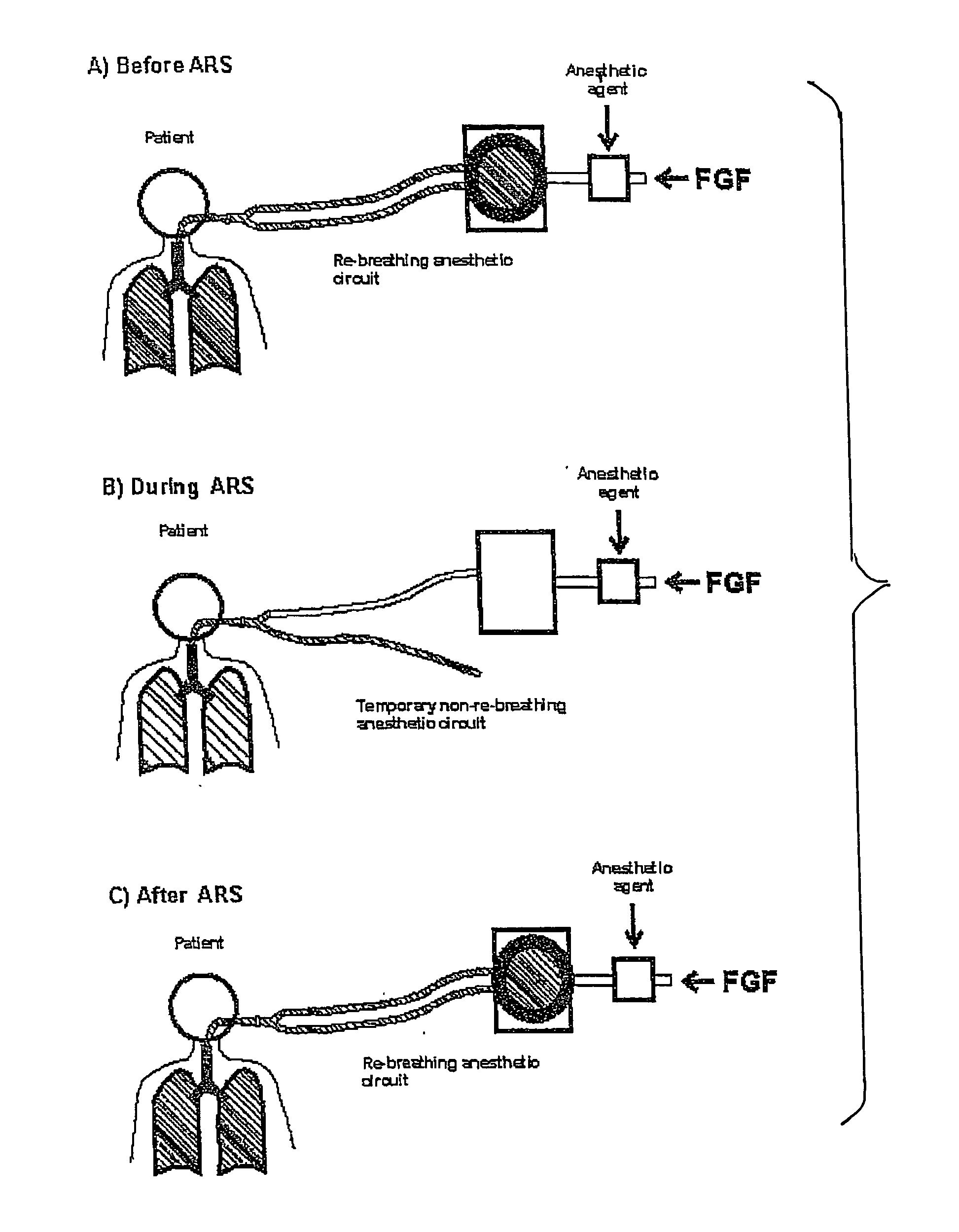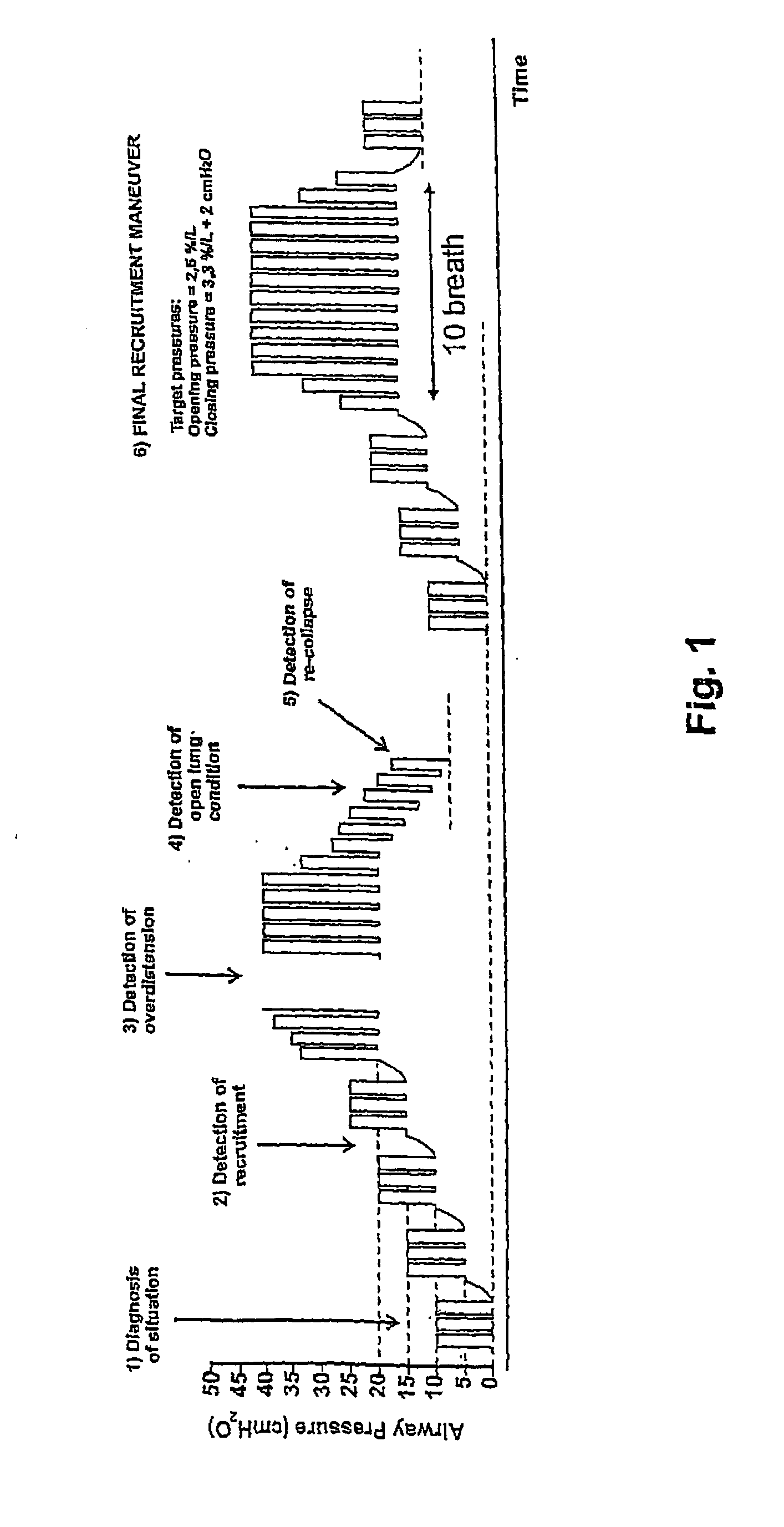Method and apparatus for changing the concentration of a target gas at the blood compartment of a patient's lung during artificial ventilation
a target gas and artificial ventilation technology, applied in the field of methods, can solve the problems of affecting the normal gas exchange of a single patient, affecting the oxygenation of arterial walls, and the inability to work optimally, so as to reduce the negative effects of general anaesthesia
- Summary
- Abstract
- Description
- Claims
- Application Information
AI Technical Summary
Benefits of technology
Problems solved by technology
Method used
Image
Examples
Embodiment Construction
[0052]FIG. 1 has been explained in the introductory part.
[0053]FIG. 2 shows a plot of the time constant (TAU) concept: The graphic shows the expired fraction of isofluorane being the target gas in this example against time using a semi-closed system. The first horizontal broken line indicates a concentration of 50% of the desired anaesthetic gas concentration. The corresponding first vertical broken line indicates the time required to reach this 50% concentration. This time period is called the time constant or TAU. After a time of 3×TAU more than 90% of the desired concentration is reached. The expired anaesthetic fraction represents the fraction of anaesthetic agent present in the gas being discarded from the patient. While this can be easily measured at the airway opening on-line and non-invasively, corresponding measurements of the target gas concentration of the blood compartment are considerably more difficult to perform. However, recordings of the expired anaesthetic fractio...
PUM
 Login to View More
Login to View More Abstract
Description
Claims
Application Information
 Login to View More
Login to View More - R&D
- Intellectual Property
- Life Sciences
- Materials
- Tech Scout
- Unparalleled Data Quality
- Higher Quality Content
- 60% Fewer Hallucinations
Browse by: Latest US Patents, China's latest patents, Technical Efficacy Thesaurus, Application Domain, Technology Topic, Popular Technical Reports.
© 2025 PatSnap. All rights reserved.Legal|Privacy policy|Modern Slavery Act Transparency Statement|Sitemap|About US| Contact US: help@patsnap.com



